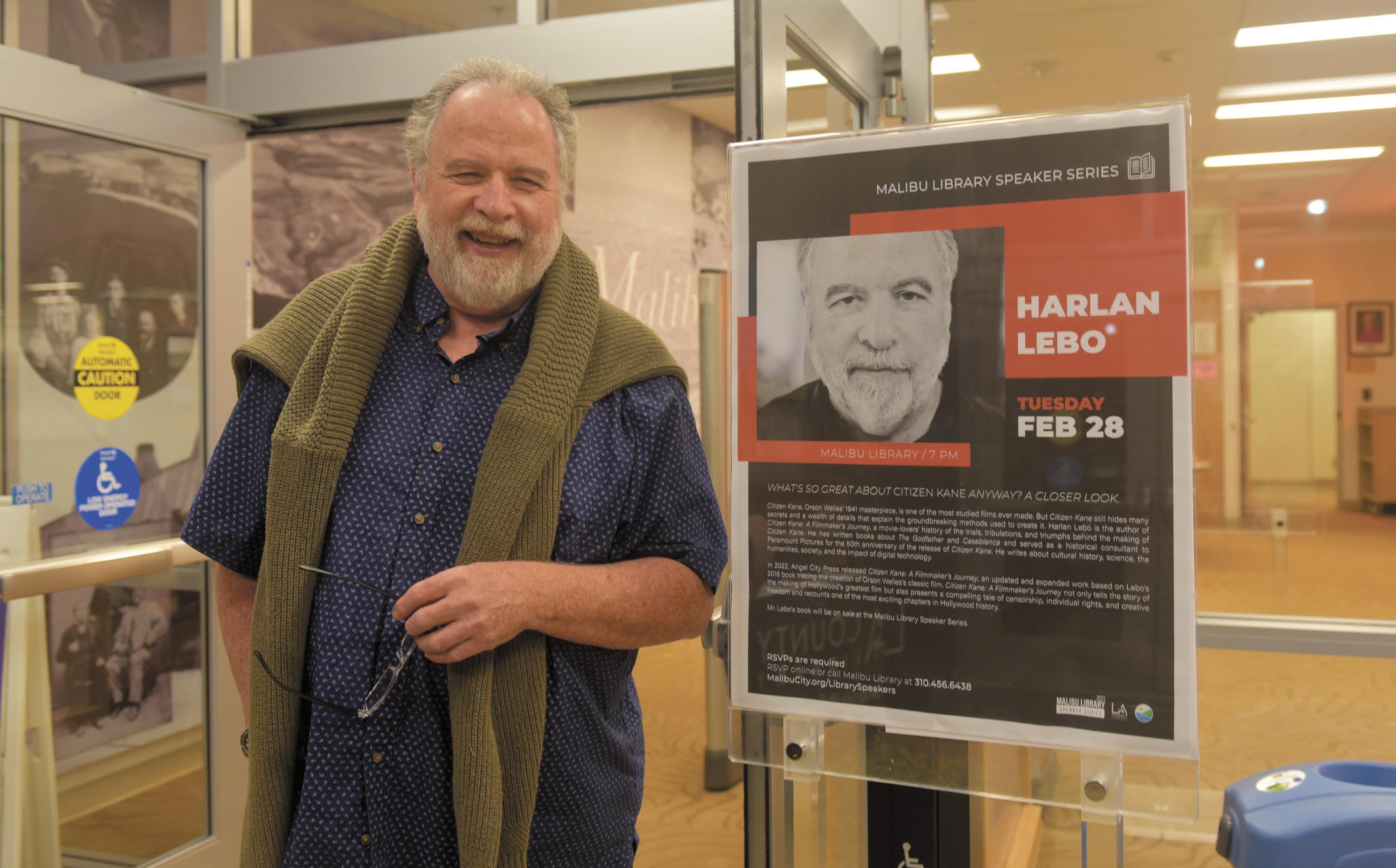
1 minute read
Malibu Life A closer examination by latest speaker: What factors contribute to ‘Citizen Kane’s’ greatness?
By
For the second installment of the 2023 Library Speaker Series, community members were invited to hear Harlan Lebo, the author of “Citizen Kane: A Filmmaker’s Journey,” a book about the making of one the most impactful lms in cinema history.
Despite the rain, lm enthusiasts gathered at the Malibu Library on Feb. 28 to learn about the making of one of Hollywood’s greatest lms, learn about the compelling tales of censorship, individual rights, creative freedom, and one of the most exciting chapters in Hollywood history.
e 1941 American drama lm was directed, produced, and starred Orson Welles. e lm was nominated for Academy Awards in nine categories and won Best Writing, Original Screenplay by Herman J. Mankiewicz, who also co-wrote the screenplay.
e picture was Welles’ rst feature lm. “Citizen Kane” is frequently cited as the greatest lm ever made. For 50 consecutive years, it stood at number 1 in the British Film Institute’s Sight & Sound decennial poll of critics, and it topped the American Film Institute’s 100 Years...100 Movies list in 1998, as well as its 2007 update.
“‘Citizen Kane’ is one the most explored, analyzed movies ever made — there’s been books written like mine, there have been academic and theoretical studies done, but it is still a motion picture that is lled with mysteries,” Lebo said. “I think more people have decided to become lmmakers after seeing ‘Citizen Kane.’”
Lebo’s book, “Citizen Kane: A Filmmaker’s Journey” is a movie lover’s history of the trials, tribulations, and triumphs behind the making of the lm. e cinematography, editing, music, and social commentary are considered innovative and precedent-setting.
Lebo talks about set designs, transitioning, lighting, deep sets and realism.
“Deep sets don’t have to be big; even small fragments were created with depth and realism in mind,” Lebo said. “Simple small things that make a scene visually interesting and at the same time, much more realistic.”










